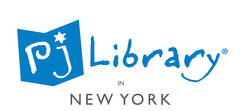- About Us
- Connect
- Learn
- Jewish Life
- Music
- Events
- Give
- Join Us
connecting song with prayer
08/30/2018 03:39:05 PM
Cantor Phillips Fogelman
| Author | |
| Date Added | |
| Automatically create summary | |
| Summary |
The Chasidic master Rabbi Yisrael ben Eliezer, known as the Baal Shem Tov, recounts a story of a boy who brought his flute to synagogue on Yom Kippur. The boy didn’t know the prayers, but was moved by the music and the spirituality of the service. At first, he sat in quiet frustration, unsure of how to express his connection with the liturgy. Towards the end of Neilah, the final service, the boy took his flute out of his pocket and blew a long and powerful note.
Days of Awe: in Agnon Tov continued to pray with more fervor than ever before addressing the congregation as follows, paraphrased by S.Y. ShemThe congregation was startled by the sound of the flute, staring at the boy disapprovingly. The boy’s father was mortified. But the Baal
“With the sound of his flute this child lifted up all the prayers and eased my burden. For this child does not know anything but… the prayer’s holy spark kindled an actual fire in him, and the flame of his longing burned higher and higher until his soul nearly expired… Now, the clean breath of his lips was very acceptable to Him, and by this means all the prayers were lifted up.”
The Baal Shem Tov’s words teach us many things that can enhance our High Holy Day worship. Whether we are singing the prayers, reading the texts, or just simply being, our contributions matter. As individuals, we each have the ability to lift our prayers and the prayers of the congregation to heaven. Although the boy in this story was unable to pray in a conventional sense, his deep kavanah, or intention, allowed him to commune with the divine.
On Rosh Hashanah morning, we read the story of Hannah, which discusses the evolution of spontaneous prayer. Hannah’s husband mistook her seemingly odd way of praying as a drunken stupor. Her heartfelt desire to be a mother, expressed through song as opposed to prose, was met with the birth of her son, Samuel.
For both Hannah and the boy in the Baal Shem Tov’s story, music was the conduit that facilitated a connection with prayer. Over the course of the High Holy Days, you will hear many different styles of music that will evoke various memories and emotions. From the majestic “Avinu Malkeinu” by Max Janowski to the contemplative “Meditation” by Marshall Portnoy to congregational favorites like Jeff Klepper and Danny Freelander’s “Shalom Rav,” the diversity of our High Holy Day music allows us to look at our liturgy from many angles, both as individuals and as a community.
My hope is that that the many sounds of the High Holy Days will give you a chance to raise your voices in joyful song and to explore the many different facets of our liturgy.
Mon, June 16 2025
20 Sivan 5785
Temple israel Happenings
-
Tuesday ,
JulJuly 1 , 2025 Sisterhood Book Club
Sisterhood Book Club
Tuesday, Jul 1st 6:00pm to 8:30pm
We will be discussing the book called The Lion Women of Tehran by Marjan Kamali. It is a novel about the deep and complicated friendship of two Iranian women during pre- and post-revolution Iran. We will be meeting at a congregant's home and share a Pot Luck dinner. -
Tuesday ,
JulJuly 8 , 2025 Current Events
Current Events
Tuesday, Jul 8th 10:30am to 12:00pm
On the second Tuesday of each month, from 10:30 -12:00, join us at the Temple for our lively discussion around issues of local, national and international news events. We cover everything from breaking news to issues around health and well being and more! If you can't come in person, contact Shari to receive a link to join us virtually. -
Thursday ,
JulJuly 17 , 2025 Brotherhood BBQ @ Senasqua Park
Brotherhood BBQ @ Senasqua Park
Thursday, Jul 17th 6:00pm to 9:00pm
All men of Temple Israel are welcome to join the Brotherhood for grilled burgers, hot dogs & veggie burgers. Kids are welcome, too. We'll meet at Senasqua Park, in Croton, on the Hudson shoreline. We promise great sunset views and a chance to make some new friends, or catch up with old ones. -
Tuesday ,
AugAugust 5 , 2025 Current Events
Current Events
Tuesday, Aug 5th 10:30am to 12:00pm
On the second Tuesday of each month, from 10:30 -12:00, join us at the Temple for our lively discussion around issues of local, national and international news events. We cover everything from breaking news to issues around health and well being and more! If you can't come in person, contact Shari to receive a link to join us virtually.
Events
Friday Night
: 7:00pm |
: 8:00pm |
Shabbat Day
: 9:30am |
: 10:30am |
Upcoming Programs & Events
Jun 19 Office Closed Thursday, Jun 19 |
Jun 21 |
Jun 28 |
Jul 1 |
Jul 4 Office Closed Friday, Jul 4 |
This week's Torah portion is Parashat Sh'lach L'cha
| Shabbat, Jun 21 |
Fast of Tammuz
| Sunday, Jul 13 |




